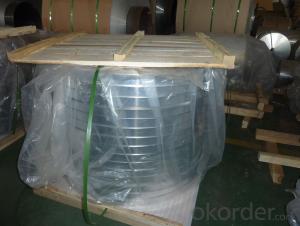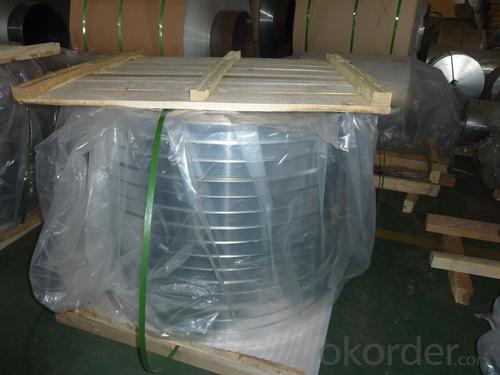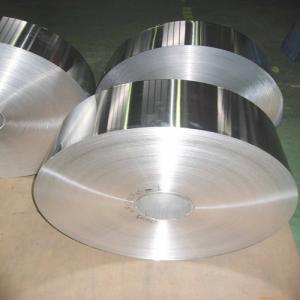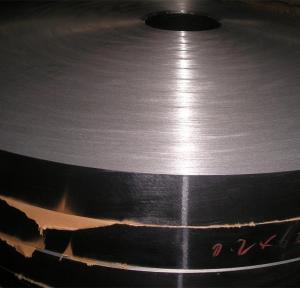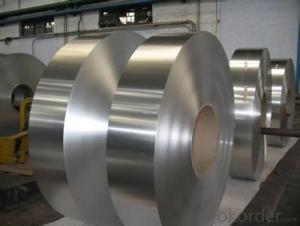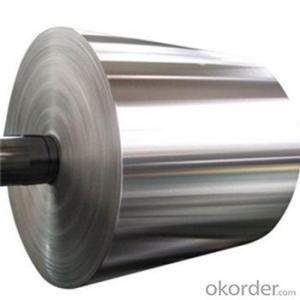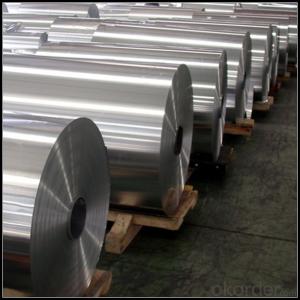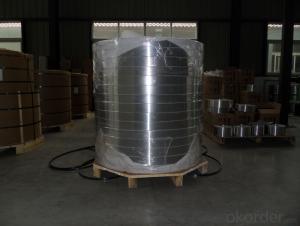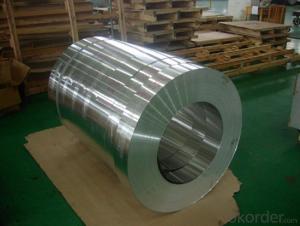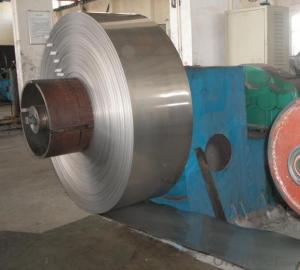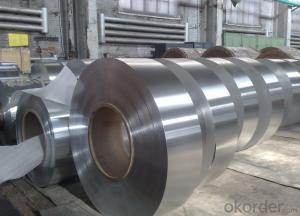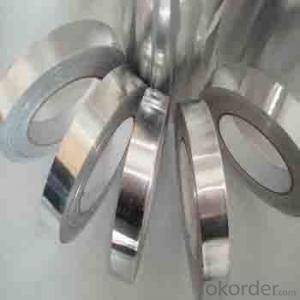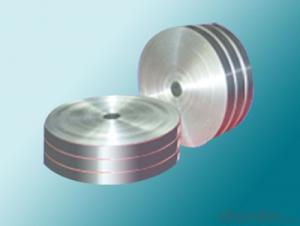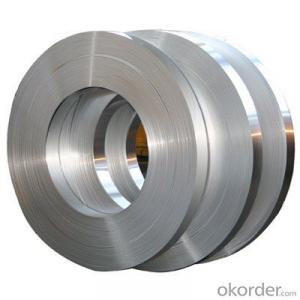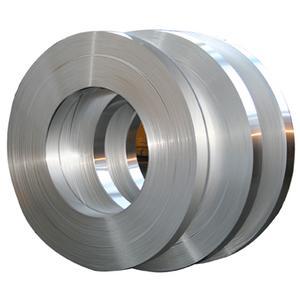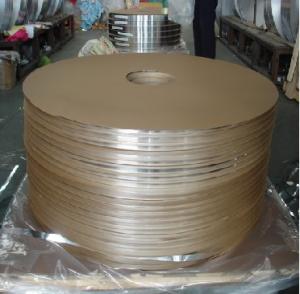Decorative Aluminum Strips for HVAC System
- Loading Port:
- Shanghai
- Payment Terms:
- TT or LC
- Min Order Qty:
- -
- Supply Capability:
- 500MT kg/month
OKorder Service Pledge
OKorder Financial Service
You Might Also Like
1.Description
Aluminum strip is widely used in industry, such as packaging & building industry. Because the good anti heat and anti wet specification. it's very good for HVAC system materials. Normally it's outside bright and inside is matt.
2.Specification and Application
Specification
| Alloy | 1050/1060/8011 |
| Temper | Soft |
| Process | DC / CC |
| Thickness | 0.07~0.2mm |
| Width | As required |
| Core ID | 505mm / 605mm |
Property
| Tensile strength | ≥90Mpa |
| Elongation | ≥15% |
| Tolerance of size | As GB Standard |
3. Advantages
We've been specialized in aluminium for more than ten years, we know this product very well, and we have good finacial support from government. And also flexible payment term and fast delivery.
4. Pictures
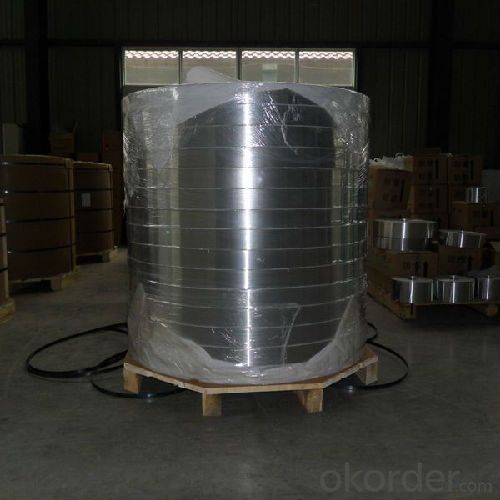
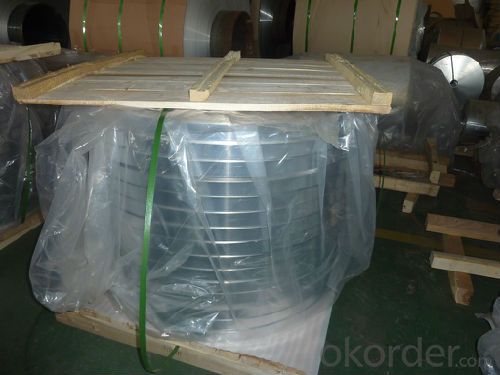
5. FAQ
1) What is your delivery time?
Our regular production time is over 30 days, It depends on the order quantity also.
2) What is your payment term?
We accept T/T, LC at sight, Usance LC 30, 60, 90, 120, 180 DAYS.
3) What is your price structure?
Our price is based on Shanghai Metal Price(SMM), not LME, but we could offer LME+ Conversion for your reference.
4) What is your minimum order quantity?
If regular size, it's 3tons per size, if not regular size, it's 5tons per size.
- Q: What benefits can be gained from incorporating aluminum strips in construction projects?
- <p>Aluminum strips offer several advantages in construction, including high strength-to-weight ratio, which means they are strong yet lightweight. They are also resistant to corrosion, making them suitable for outdoor applications and harsh environments. Aluminum strips are easy to work with, allowing for easy installation and customization. They are also energy-efficient, as they reflect heat and can help reduce cooling costs. Additionally, aluminum is recyclable, contributing to sustainability and reducing waste.</p>
- Q: Describe the steps involved in the production of aluminum strips from raw materials to the final product.
- <p>The process of manufacturing aluminum strips involves several key steps. Initially, raw materials, typically bauxite ore, are mined and then processed to extract alumina (aluminum oxide). This alumina is then dissolved in a cryolite bath at high temperatures within a reduction cell in the Hall-H茅roult process. Here, aluminum is reduced and collected as molten metal. The molten aluminum is then cast into ingots or directly into billets. These billets are then hot or cold rolled into strips, with multiple passes through rollers to achieve the desired thickness and width. The strips may undergo annealing to restore ductility and improve workability. Finally, the aluminum strips are cleaned, coated if necessary, and then cut to length, inspected, and packaged for distribution.</p>
- Q: This question asks for a step-by-step guide on how to measure and cut an aluminum strip to fit a specific project.
- <p>To measure and cut an aluminum strip for your project, first determine the required length and width. Use a measuring tape or ruler for precise dimensions. Mark the measurements on the strip with a marker. For cutting, use a hacksaw or a metal cutting saw for straight cuts. Ensure the strip is secured in a vise or clamped to prevent movement. Cut along the marked lines, and use metal files or sandpaper to smooth any rough edges. For curved cuts, use a jigsaw with a metal cutting blade. Always wear safety goggles and gloves to protect yourself from metal shards and sharp edges.</p>
- Q: Is it possible to utilize aluminum strips for creating decorative patterns or designs on the exterior of buildings?
- <p>Yes, aluminum strips can be used to create patterns or designs on building exteriors. They are lightweight, durable, and resistant to corrosion, making them ideal for outdoor applications. Aluminum strips can be cut, bent, and shaped into various forms to create intricate designs and patterns. They can also be anodized or painted to achieve different colors and finishes, enhancing the aesthetic appeal of the building's exterior.</p>
- Q: What benefits does aluminum offer as a roofing material compared to other metals?
- <p>Aluminum strips for metal roofing offer several advantages over other types of metal roofing. They are lightweight and easy to install, reducing labor costs. Aluminum is highly resistant to corrosion, ensuring a long lifespan and low maintenance. It also reflects heat well, which can help keep buildings cooler and reduce energy costs. Additionally, aluminum is recyclable and can be produced in various colors, making it an environmentally friendly and aesthetically versatile choice.</p>
- Q: What types of aluminum are more cost-effective for specific applications?
- <p>Yes, there are different types of aluminum alloys that offer varying degrees of cost-effectiveness depending on the application. For instance, 1100 series aluminum, which is 99% pure, is the most cost-effective due to its low alloying content but has limited strength. On the other hand, 6000 series alloys, like 6061, are stronger and more durable, making them ideal for structural applications but slightly more expensive. The choice depends on factors like strength, corrosion resistance, and weight requirements, which can influence the cost-effectiveness of an aluminum alloy for a specific use.</p>
- Q: Explain how aluminum strips can impact the waterproofing process and their role in construction.
- <p>Aluminum strips play a crucial role in waterproofing by serving as a barrier against water penetration. They are often used in construction to seal joints and seams where water could potentially infiltrate. These strips are durable, corrosion-resistant, and flexible, making them ideal for maintaining a watertight seal even under fluctuating temperatures and structural movements. They can be used in conjunction with other waterproofing materials such as sealants and membranes to create a robust defense against water damage. By preventing water from entering buildings or structures, aluminum strips help to protect against moisture-related issues like mold, structural decay, and deterioration, thereby enhancing the longevity and integrity of the construction.</p>
- Q: This question asks for a comparison between pure aluminum and aluminum alloy, highlighting their distinct characteristics.
- <p>Aluminum is a lightweight, soft, and ductile metal found in the Earth's crust. It is highly reactive and conducts heat and electricity well. Aluminum alloy, on the other hand, is a mixture of aluminum with other elements such as copper, magnesium, or silicon. These alloys are stronger, more durable, and have improved mechanical properties compared to pure aluminum. They are also less prone to corrosion and can be tailored for specific applications, making them widely used in industries like aerospace, automotive, and construction.</p>
- Q: What are the environmental regulations that impact the production and usage of aluminum strips?
- <p>Yes, there are several environmental regulations that affect the production and use of aluminum strips. These include regulations on emissions, waste disposal, and energy consumption. For instance, the European Union's Industrial Emissions Directive sets standards for emissions from aluminum production facilities. In the United States, the Environmental Protection Agency (EPA) enforces regulations such as the Clean Air Act and Resource Conservation and Recovery Act (RCRA), which impact how aluminum is produced and used. These regulations aim to minimize pollution, conserve resources, and promote recycling, thereby influencing the aluminum industry's practices globally.</p>
- Q: What factors should be considered to determine if an aluminum strip is suitable for a specific application?
- <p>To determine if a certain type of aluminum strip is suitable for your application, consider the following factors: mechanical properties such as strength and ductility, corrosion resistance, thermal conductivity, and electrical conductivity. Assess the strip's dimensional tolerances and surface finish to ensure they meet your requirements. Check if the strip's formability and weldability align with your manufacturing processes. Also, consider the strip's weight and cost-effectiveness. It's advisable to consult with a material scientist or supplier who can provide specific recommendations based on your application's unique needs.</p>
Send your message to us
Decorative Aluminum Strips for HVAC System
- Loading Port:
- Shanghai
- Payment Terms:
- TT or LC
- Min Order Qty:
- -
- Supply Capability:
- 500MT kg/month
OKorder Service Pledge
OKorder Financial Service
Similar products
Hot products
Hot Searches
Related keywords
